By Falco
28 Aug 2024
Executive summary
Frontier markets offer attractive growth prospects, but a passive investment approach may not be the best approach. These markets have historically shown lower risk-adjusted returns, higher drawdowns in performance and lower rates of recovery from losses compared to emerging and global equities. Also, frontier market equities exhibit inconsistent correlations with international markets, leading to potentially highly unpredictable performance. This underperformance could be attributed to the uneven growth across regions and sectors due to country-specific economic and political risks and the asset classes reverse survivorship bias (distortions due to shifts in the composition of the benchmark indices). Therefore, investors should consider alternative strategies to benefit from frontier market growth while managing the associated risks. These alternative strategies could be allocation to actively managed funds, country/sector-specific funds, private market instruments, and frontier market debt.
Definition of the frontier markets
We have used the MSCI Frontier Markets Equity Index as the main source of data for this paper. The MSCI Frontier Markets Index captures large and midcap representation across 28 Frontier Markets (FM) countries. These countries are considered less mature than emerging markets due to demographics, development, politics, and liquidity. The index includes 209 constituents, covering about 85% of the free float-adjusted market capitalization in each country. As of 2023, the MSCI Frontier Markets Index includes the following countries:
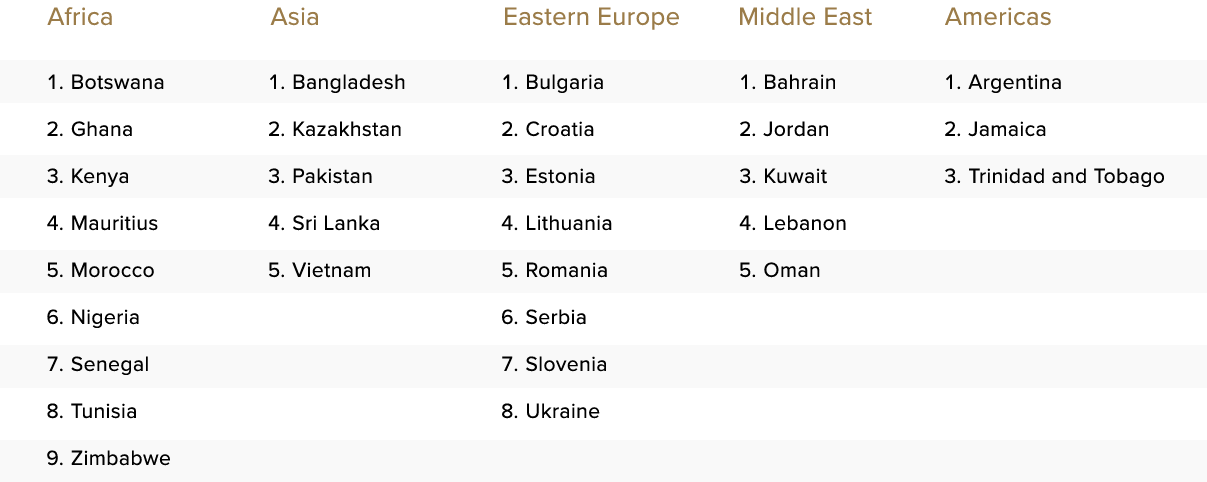
Socio-economic factors of the frontier markets1
A Demographic Dividend from Frontier Markets
Frontier markets, though not defined by size (housing nearly 1 billion people), boast a powerful economic driver: a large and growing young population. This "demographic dividend" translates into a competitive workforce, fuelling long-term economic growth. This advantage stands in contrast to the slowing population growth in the developed economies and increasingly impacting emerging markets like China.
Emerging Consumer Power
Furthermore, a growing middle class is fuelling consumer spending in frontier markets. As wealth and disposable income rise, economic activity receives a natural boost. This trend can also accelerate digitalisation and potentially lead to productivity gains.
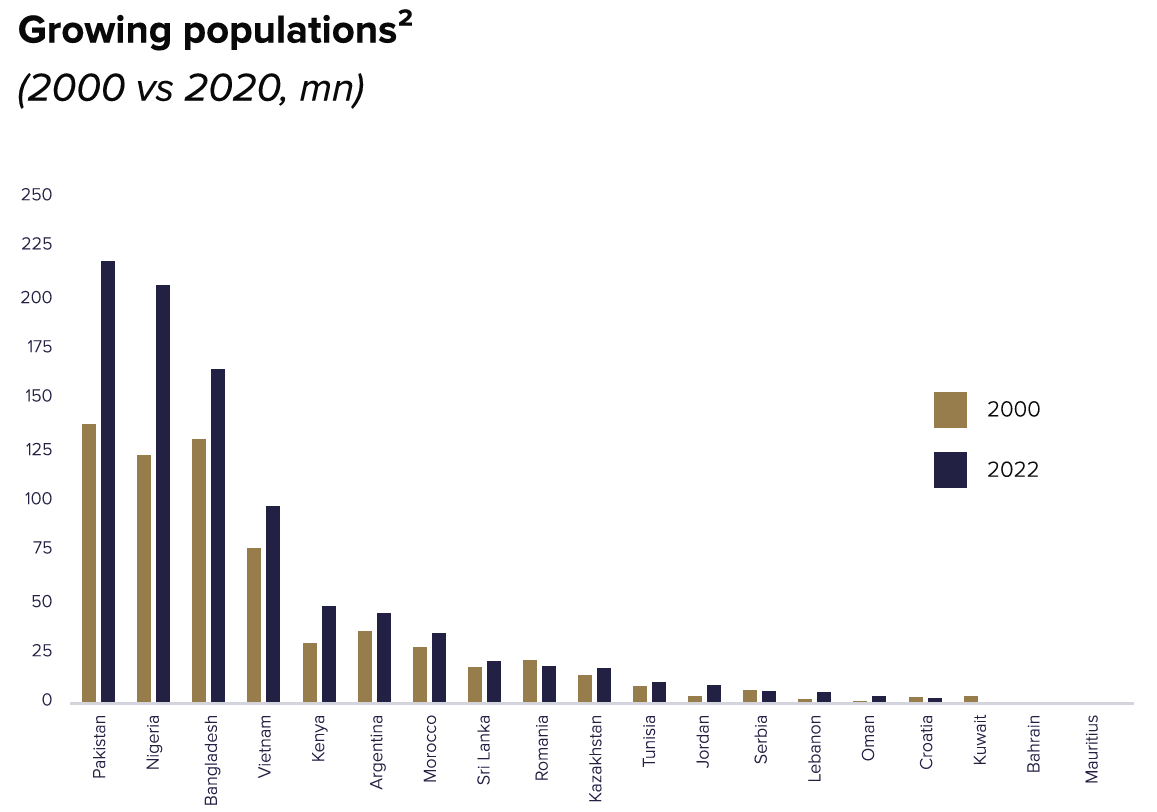
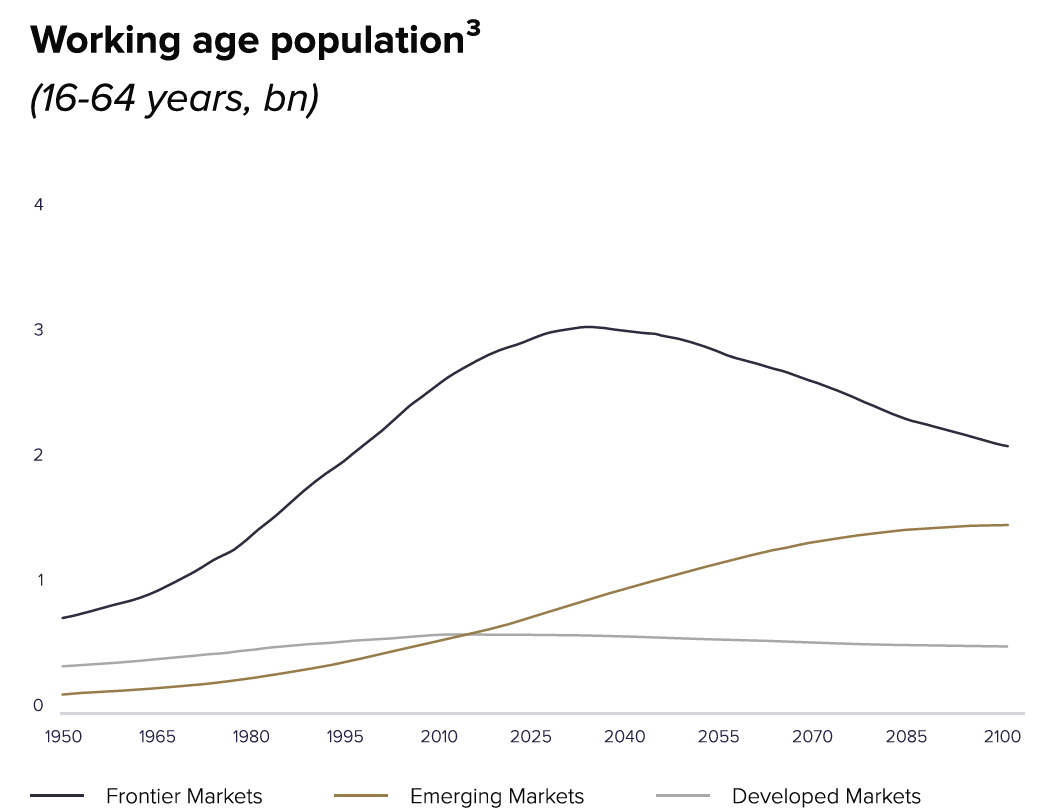
Supply chain diversification
Supply chain diversification and nearshoring are also transforming frontier markets, presenting significant growth opportunities. By strategically locating production stages in neighbouring countries, these markets can leverage lower costs, economies of scale, and higher productivity.
Examples of Success:
Frontier Markets in Portfolio Construction
Risk and return considerations
Performance
From 2004-03-01 to 2024-03-25 in USD

Note: Assers are rebased to 100
A 20-year analysis reveals that frontier markets have underperformed both global equities and emerging market equities in terms of compound annual growth rate (CAGR). While frontier markets delivered a CAGR of 4.4% hedged back to US dollar terms, global equities and emerging market equities achieved CAGRs of 7.9% and 6.4% respectively. This lower return comes with higher risk, as frontier markets also exhibited greater standard deviation and maximum drawdown compared to the other equity markets.
Correlation
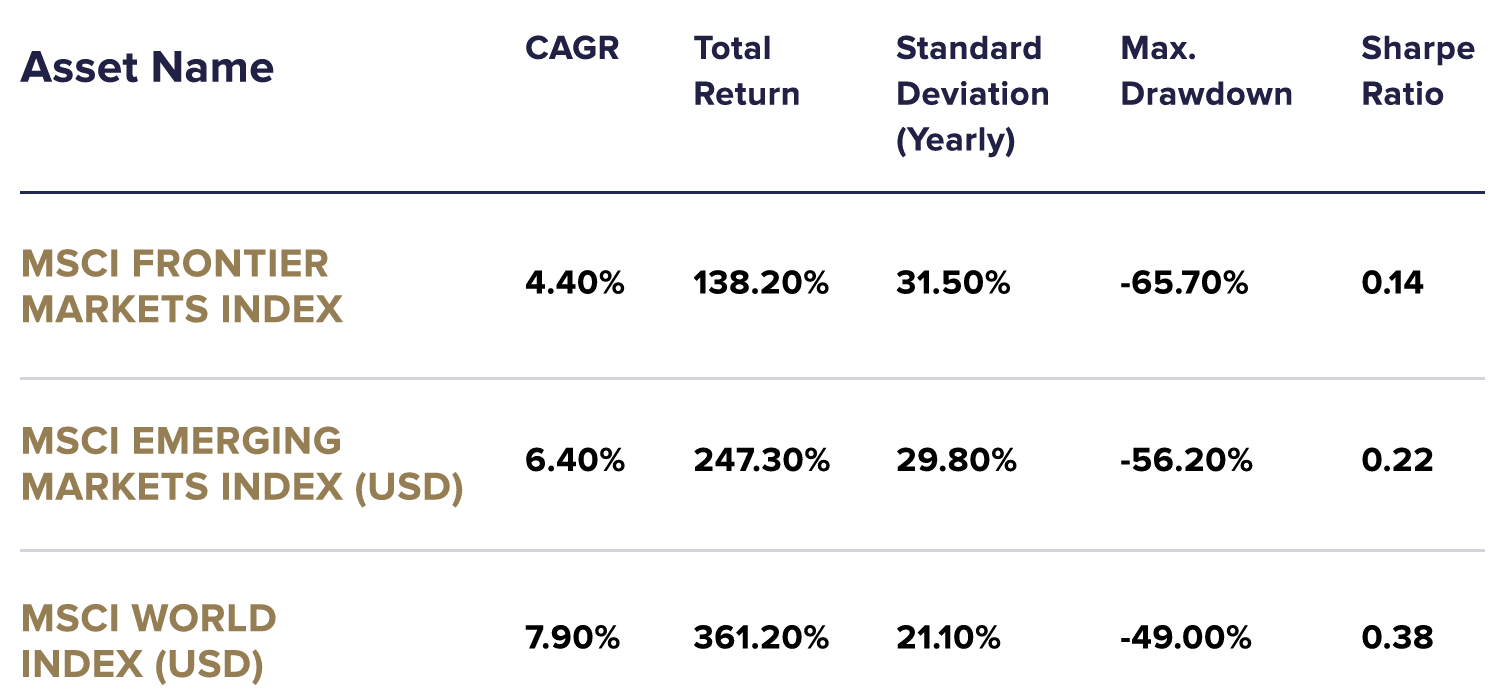
Frontier markets exhibit a low 20-year correlation with global and emerging equity markets at 0.22 and 0.25, respectively. However, a study of 52-week rolling correlations reveals that the correlation of frontier equities with global and emerging equities is not consistent and displays high fluctuations. Notably, frontier markets tend to have a lower correlation with other markets during times of market stress.
Correlation Matrix Heatmap
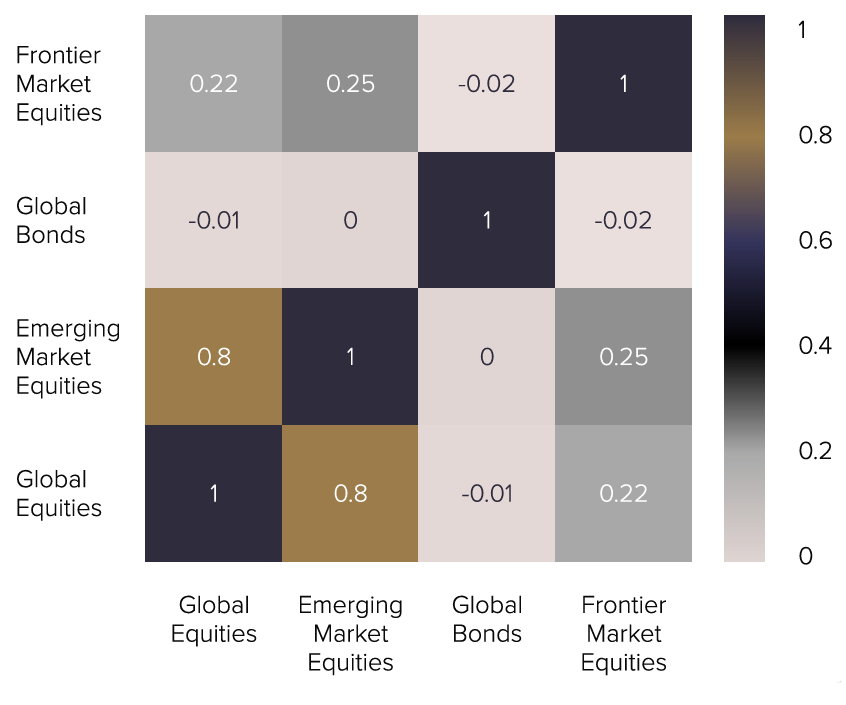
52 Week Rolling Correlation - Frontier Markets
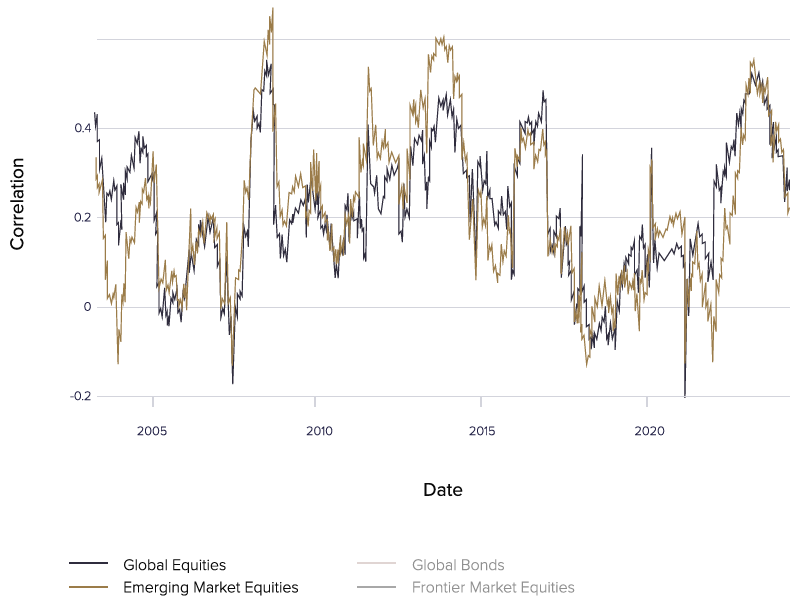
Interestingly, further analysis indicates that during market stress periods, frontier markets incur greater and sharper drawdowns in performance compared to global equities and exhibit slower recovery rates than other markets.
Drawdowns
From 2004-03-01 to 2024-03-25 in USD

This suggests that while frontier markets may offer diversification benefits in terms of correlation during stable market conditions, they may pose higher risks during and post periods of market stress.
The important currency dimension
As to the currency risk dimension in frontier markets, this is very much a country specific aspect. For instance, UAE as a constituent of the frontier markets (before graduation to the Emerging Markets) had no or limited currency risk as AED was pegged to the US dollar. Frontier market countries and in particular oil producing countries may have minimum currency risk and low hedging cost while other countries within this classification may face significant currency risk with limited, or no hedging mechanisms available. An example of the latter is Vietnam which has a 27% weighting in the MSCI FM index. Its currency regime is a bit of a mix. Officially, it's called a managed float. The Vietnamese government, through its central bank, intervenes in the currency market to influence the value of the dong (VND). In practice, Vietnam's managed float has some characteristics of a crawling peg. This means the government allows the dong to depreciate against the US dollar, but at a gradual pace. Therefore, the currency risk and hedging should be separately addressed on the country level.
Investment Conclusions
Frontier markets offer intriguing growth prospects due to favourable economic growth factors and specific industry development. However, a historical analysis of frontier market equities (as represented by the MSCI Frontier Markets Index) reveals a different picture. Frontier equities have exhibited
These characteristics suggest that a passive allocation to frontier market equities may not enhance the risk-adjusted return of a diversified multi-asset portfolio.
Potential Reasons for Underperformance:
Alternative Strategies for Capitalising on Frontier Market Potential:
To benefit from the positive economic aspects of frontier markets while mitigating the challenges of the MSCI Frontier Markets Index, alternative allocation strategies warrant exploration and due diligence:
By considering these alternative strategies, investors can potentially harness the growth prospects of frontier markets
while managing the inherent risks.
Gary Dugan - Investment Committee Member
Bill O'Neill - Non-Executive Director & Investor Committee Chairman
28th August 2024
The information contained within is for educational and informational purposes ONLY. It is not intended nor should it be considered an invitation or inducement to buy or sell a security or securities noted within nor should it be viewed as a communication intended to persuade or incite you to buy or sell security or securities noted within. Any commentary provided is the opinion of the author and should not be considered a personalised recommendation. The information contained within should not be a person's sole basis for making an investment decision. Please contact your financial professional at Falco Private Wealth before making an investment decision. Falco Private Wealth are Authorised and Regulated by the Financial Conduct Authority. Registered in England: 11073543 at Millhouse, 32-38 East Street, Rochford, Essex SS4 1DB
